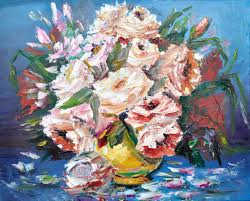PRINT. CLASSIFICATION AND VARIETIES (part 2)
 Lavis (from Fr. lavis – wash) – a kind of aquatint. Known since the 1780s. The drawing is applied by needle etching. The tonality is obtained by etching with acid, which is applied to the board with a brush. The boundaries of the tone spot are sharply defined. The print of Lavis resembles a work executed in watercolor. Lavis is very close to aquatint in terms of its external visual characteristics, but differs from it in watercolors of a tone spot, softness and fuzziness of outlines. Like aquatint, Lavis is used in combination with other etchings, for example, with a dry needle. The technique allows you to get no more than 30 quality prints from one board.
Lavis (from Fr. lavis – wash) – a kind of aquatint. Known since the 1780s. The drawing is applied by needle etching. The tonality is obtained by etching with acid, which is applied to the board with a brush. The boundaries of the tone spot are sharply defined. The print of Lavis resembles a work executed in watercolor. Lavis is very close to aquatint in terms of its external visual characteristics, but differs from it in watercolors of a tone spot, softness and fuzziness of outlines. Like aquatint, Lavis is used in combination with other etchings, for example, with a dry needle. The technique allows you to get no more than 30 quality prints from one board.
Zuev Alexey. Lada. Molodetsky Kurgan – Reservazh Reservazh (from French réservage) is a type of etching. The reserve first appeared in France in the second half of the 19th century. Continue reading
RUSSIAN Vanguard. MAIN DIRECTIONS (part 3)
 Abstractionism (abstract art).
Abstractionism (abstract art).
The main theorists and practitioners were V. Kandinsky, P. Mondrian. Abstractionism rejected the image of forms of visually perceived reality, from isomorphism and focused solely on the expressive, associative, synesthetic properties of color, non-isomorphic abstract color forms and their innumerable combinations. The first abstract works were created in 1910 by Kandinsky. He set forth the aesthetic creed of abstract art in his book On the Spiritual in Art (1910) and in a number of other books and articles. Its essence boils down to the fact that the rejection of the image of external, visible forms of objects allows the artist to focus on solving exclusively pictorial problems of harmonizing color and form, through which the spiritual cosmos comes into contact with the recipient. Continue reading
RUSSIAN Vanguard. MAIN DIRECTIONS (part 2)
 Russian avant-garde of his goals and aspirations.
Russian avant-garde of his goals and aspirations.
Like the trends of modernism that preceded it, the avant-garde was aimed at a radical transformation of human consciousness by means of art, at an aesthetic revolution that would destroy the spiritual inertness of existing society, while its artistic and utopian strategies and tactics were much more decisive, anarchistly rebellious. Not satisfied with the creation of exquisite “foci” of beauty and mystery that oppose the low-lying materiality of life, the avant-garde introduced into its images the crude matter of life, “street poetics”, the chaotic rhythm of the modern city, nature endowed with powerful creative and destructive power, he repeatedly emphasized declaratively in In their works, the principle of “anti-art”, thereby rejecting not only the old, more traditional styles, but also the established concept of art as a whole. Continue reading
RUSSIAN Vanguard. MAIN DIRECTIONS (part 1)
 The concept of avant-garde. And its differences from modernism.
The concept of avant-garde. And its differences from modernism.
What is the difference between avant-garde and modernism? This issue is still controversial; There are several enduring traditions of understanding the differences between avant-garde and modernism. There is only one way out: use the version that seems the most intelligible and logical.
First, chronologically, modernism preceded the vanguard. Vanguard is a product of the revolutionary era of the early twentieth century, while modernism arose at the end of the nineteenth. Continue reading
HISTORY OF THE DEVELOPMENT OF THE DUTCH AND FLEMAND STILL LIFE (part 2)
 The developed manufactory, which arose on the basis of marine industries and shipping, a huge colonial economy and a leading role in world trade, provided Holland with an economic upsurge. Natural sciences are being developed to cater for the increased needs of the economy. Culture is blooming. Holland is becoming the center of European typography, and its universities enjoy universal fame. Significant successes are made by fiction, professional Dutch theater appears, outstanding works arise in the field of architecture, graphics flourish, and finally, the most characteristic, specifically Dutch art – painting reaches unprecedented heights.
The developed manufactory, which arose on the basis of marine industries and shipping, a huge colonial economy and a leading role in world trade, provided Holland with an economic upsurge. Natural sciences are being developed to cater for the increased needs of the economy. Culture is blooming. Holland is becoming the center of European typography, and its universities enjoy universal fame. Significant successes are made by fiction, professional Dutch theater appears, outstanding works arise in the field of architecture, graphics flourish, and finally, the most characteristic, specifically Dutch art – painting reaches unprecedented heights.
We pay tribute to the brave Dutch seafarers, respect the achievements of Dutch opticians and doctors, philosophers and lawyers, but Dutch painters have overshadowed their glory for centuries. Continue reading


